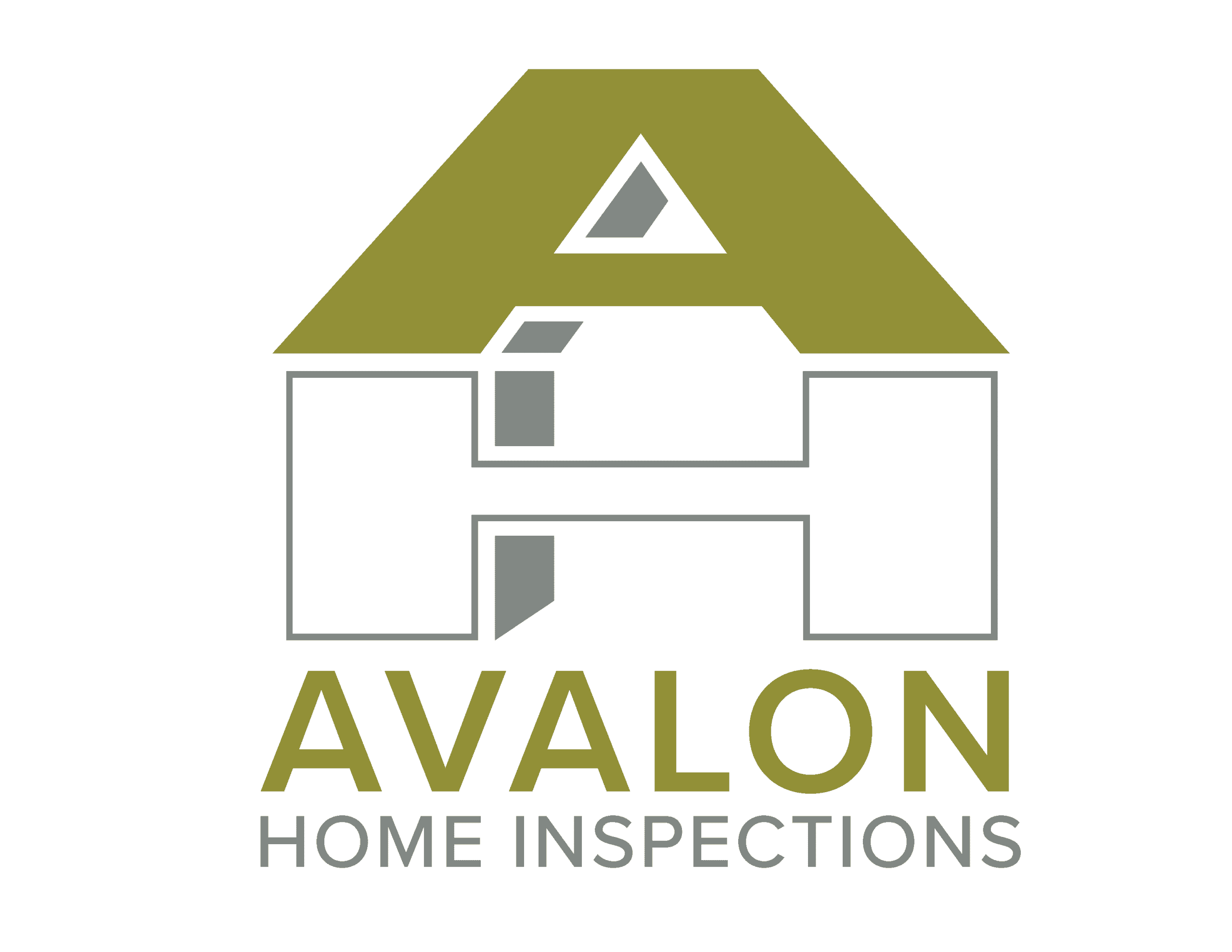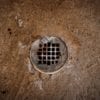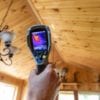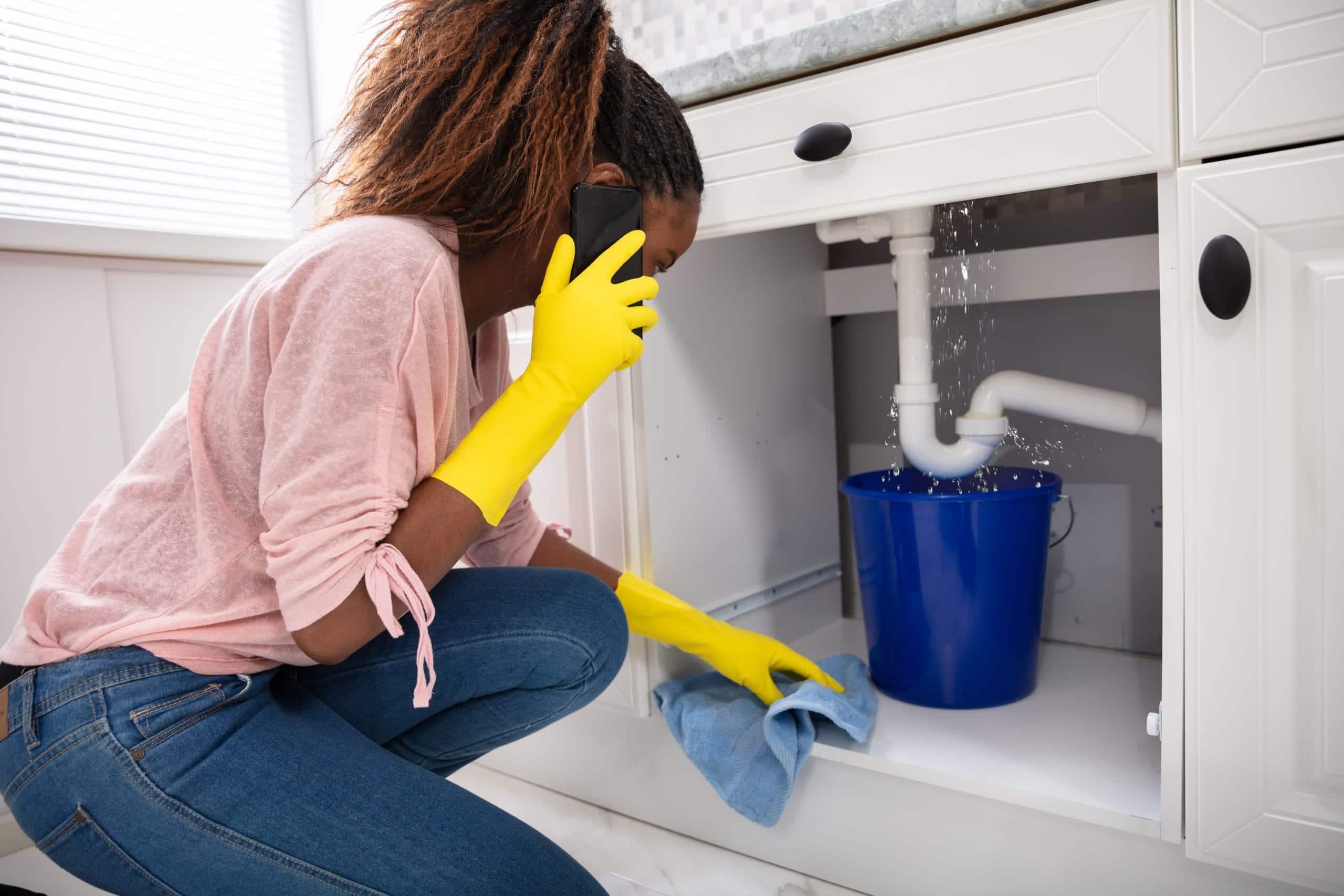
Underneath the kitchen and bathroom sinks is a trap, also called a P-trap. This trap holds water in it and seals the sewer gases in the pipes. Sometimes, this can become clogged and leak on the bottom of the cabinet.
Start by filling the sink with water, opening the water stopper, and watch the trap as it drains. When the water leaks, it is usually at a connection so put your fingers around each connection as the water flows through. If you can feel it on your fingers, then you know where the leak is coming from.
How do you fix a sink trap leaking? First, try tightening the connection. If that doesn’t work, disassemble the trap. Let’s take a look at why this is important, what causes a sink trap or P trap to leak and how to fix it.
Why This is Important
The sink trap or P trap is an important part of the drains in the bathroom and kitchen. This trap is located under the sink and also in the shower drain in the bathroom. As a result, it does a good job of keeping the sewer gases from getting into the home. However, if it becomes dry, the sewer gases will escape and the bathroom or kitchen can smell like a sewer.
Tighten the Connection if Sink Trap Leaking
If you have the strength to tighten the connection with your hand, do it, but don’t hurt yourself. Sometimes it is difficult to do, so try using locking or slip joint pliers – but you need two pairs. One to hold the pipe steady and one to grip the coupling nut and tighten it clockwise.
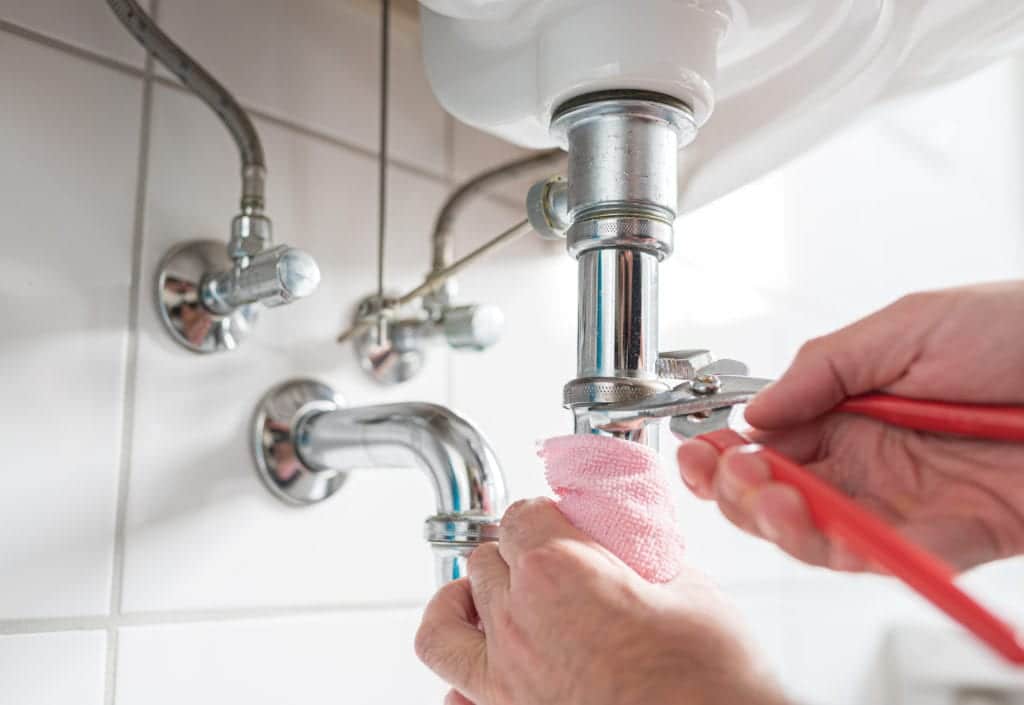
Furthermore, be sure not to overdo it and strip the threads. If you don’t do it this way with two sets of pliers, you can move the pipe out of alignment and the leak will continue.
Disassemble the Sink Trap If it is Leaking
If tightening the connection doesn’t seem to fix the leak after you run water through it again, the next thing to do is disassemble the trap. First, put a bucket underneath the trap and use the pliers above to disconnect the slip joint nuts from the tailpiece and drainpipe.
Then, water will pour out where you disconnected the pipe. This will allow you to clean the pipe out with a clothes hanger to see what might be trapped inside.
If you see any faulty parts, be sure to replace them and then reconnect the pipes back together using the pliers. Again, be careful you don’t take off the threads.
Lastly, run the water again, look for leaks and tighten any areas that need tightening. Put newspaper under the pipe and check for leaks the next day. If this doesn’t work, removing the entire trap comes next.
Removing the Trap
Each joint of the pipe has a rubber or plastic washer. Check these to see if they are aligned correctly or if they are broken or worn out as they provide a watertight seal. The watertight seal is necessary for keeping it from leaking.
Do you see any cracks or corrosion on the pipe? If yes, take that section with you to the local hardware store so you know what to replace it with. It doesn’t cost much and you can fix it in no time. If you have issues with the pipes or need help, contact a professional.
What Causes the Leak in the Sink Trap
Improper Installation of the Sink Trap
The sink trap or P trap may not be properly installed. Look to make sure the washers are installed correctly. If not, that could be the issue and they need to be installed correctly or replacing.
Corrosion Can Cause Sink Trap Leaking

If the pipes are corroding, that can cause leaking to occur. Some pipes will corrode easier than others. Depending on the material that is used for the pipes, as well as the hardness of the water and what is poured down the drain can cause corrosion.
Over-Tighthened Nut
Over-tightening the nut, as warned above, can cause cracks in the pipes.
Improper Fitting of the Pipes, Washers, and Nuts
If the pipes, washers, or nuts are not the correct size, then there will be a leak. The purpose is for all of them to fit together and create a seal. This won’t happen when they are not the right size.
Other Areas to Check Into
There is a P trap in the shower drain that can also cause a sewer smell in your home so make sure you check that area as well.
Since you are at the sink, look for black mold on the silicone or caulking around the sink. Sometimes we don’t think to look for this but it is a good time to check it out. If you do see it, use vinegar, baking soda, and gloves to clean it.

S Trap
An “S” trap is like a P trap but has an extra curve. If you have a home that is older, it is possible you could have this under your sink. It is not something you want to have as it will allow the sewer gases into the home. If you find there is an S Trap, you will need to call a professional to take it out and put in a P trap for you.
Shower and P Trap
Sometimes you might have a sewer smell coming from the shower. This can be due to a dirty P trap or a missing P trap. Since you are in the bathroom looking into the sink issue, take a look for the P trap for the shower and also clean it if it is dirty.
Water Backing Up in the Home

Do you see water backing up in other places of the home? Or is there lush grass in the yard, or perhaps the ground is moving? You may have a sewer issue and need to ask for a sewer scope inspection to rule that out as the culprit.
When to Call a Professional
Call a professional if you don’t feel like you are very handy and can figure out what is happening under the sink. It is okay if you are unsure, that is why there are professionals! Don’t be afraid to call on one to help as you can ensure the issue is fixed properly.
Conclusion
There are several ways to diagnose a leak in the sink trap or P-trap. It is important to take care of it and fix it right away. As mentioned above, the P trap is there to keep the sewer gases out of the home and keep your air clean.
The last thing you want is to be breathing in those toxic fumes. Have questions about a leak under the sink? Leave us a question below or reach out to us for help!
